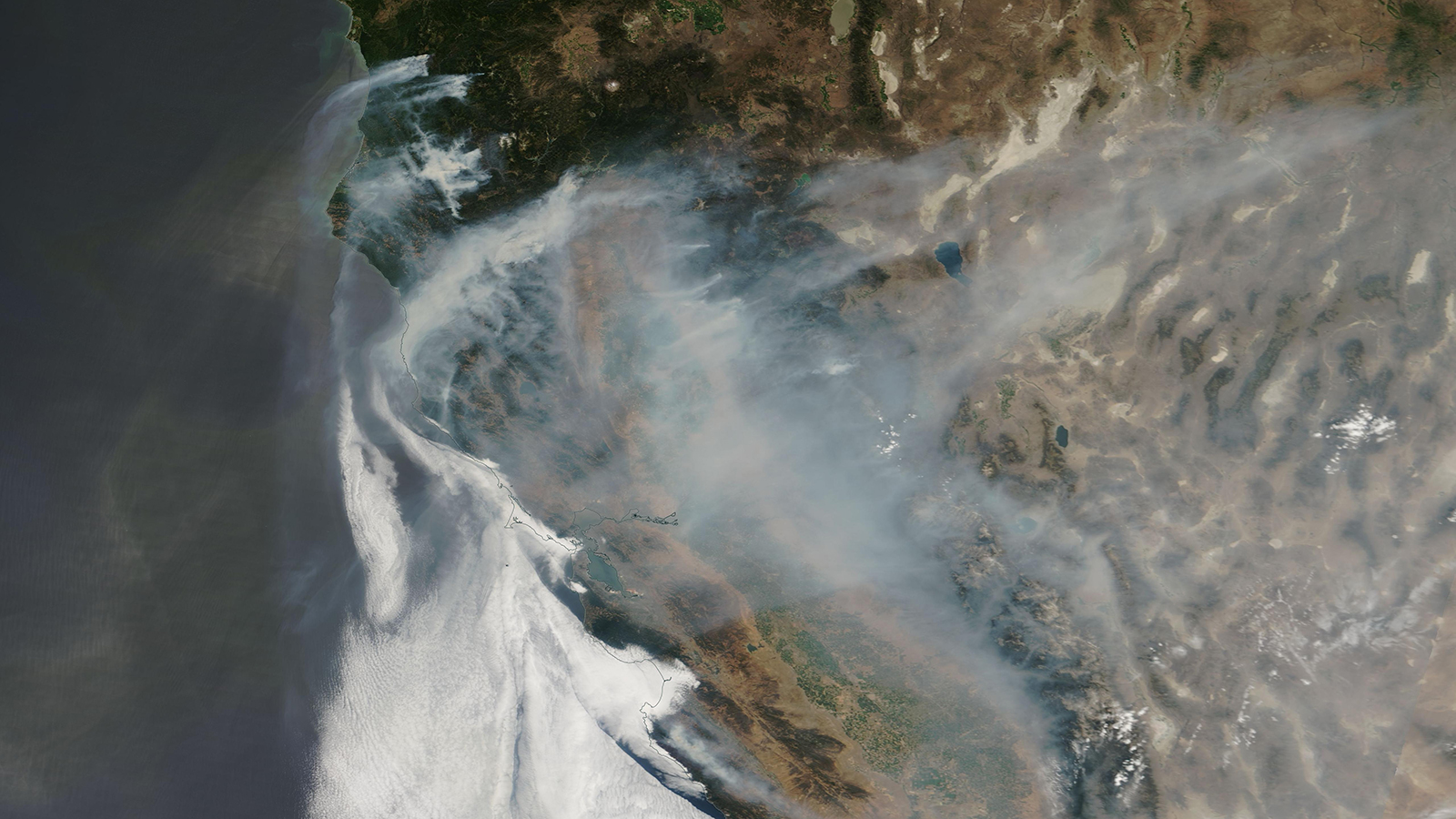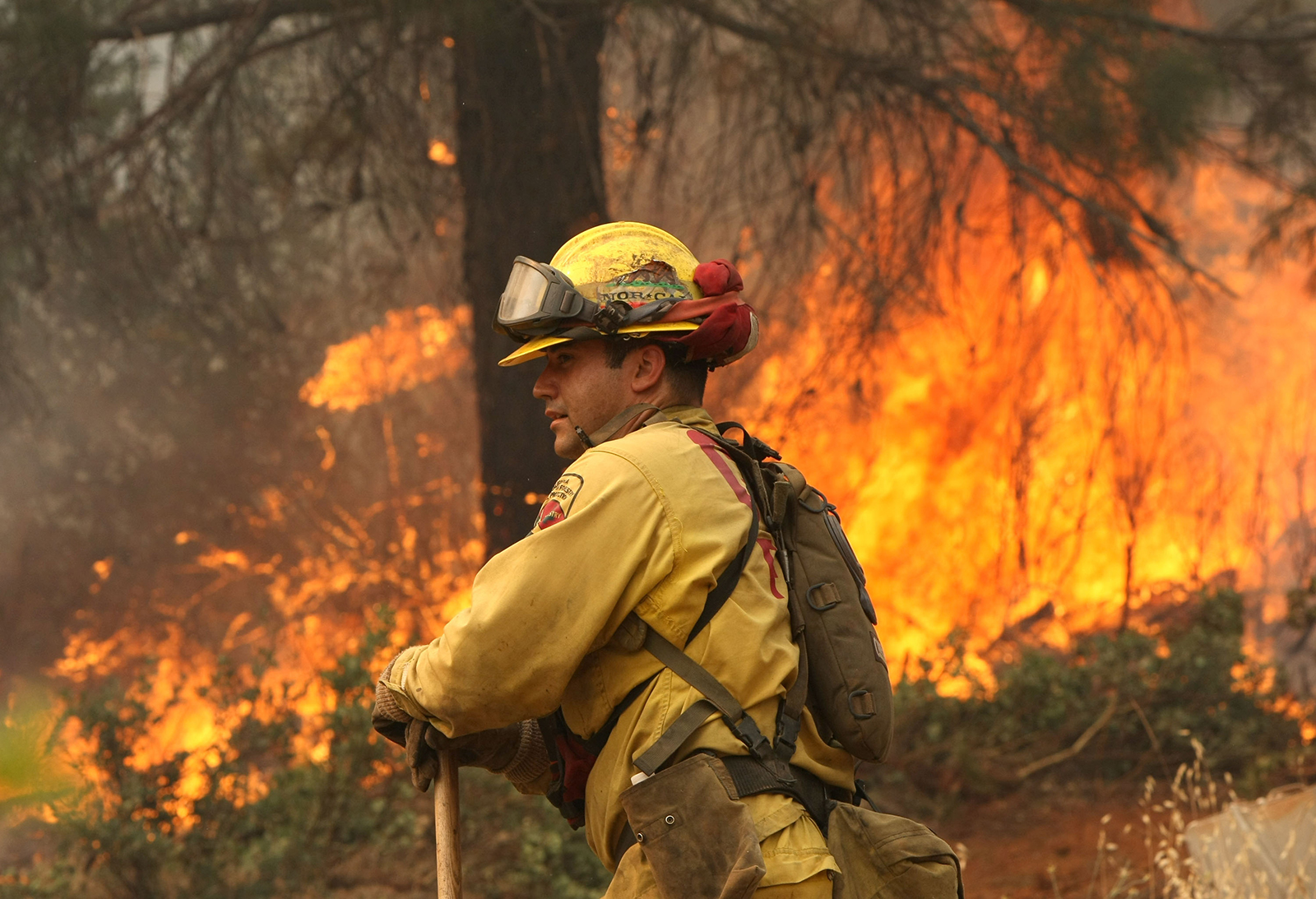Is New York City Getting its Composting Program Right?
Climate•10 min read
Investigation
An early-life wildfire exposure sickened these monkeys for decades.


Words by Jesse Nichols, Grist
The experiment started by chance.
In 2008, summer lightning storms sparked a chain of wildfires in the forests of Northern California. For weeks, smoke blanketed the state, drifting all the way to the California National Primate Research Center, where 50 rhesus monkeys had just been born.
“I looked out the window and it looked like the middle of winter here in the Sacramento Valley,” said Lisa Miller, an associate director of research at the center.

All over Northern California, air quality was dropping to unhealthy levels. People living and working in the valley were breathing smoke day after day. And so were all the local outdoor animals — including the monkeys at the research center. As the smoky days stretched on, Miller kept thinking about the primates, whose habitat she could see from her office window.
The gears in her head started to turn. “As a scientist, our minds are always thinking about the next question and trying to put the pieces together,” she said. Miller wondered if this generation of monkeys might end up holding the answer to a public health mystery: how early smoke exposure can ripple across an entire lifetime.
That twist of fate — a lightning strike, a wildfire, and a primate lab caught downwind — ended up giving researchers a rare glimpse into the surprising lifelong health impacts of smoke on animals and humans alike.

Scientists know the short-term effects of wildfire smoke on humans — irritating the lungs, or triggering asthma or heart attacks. They have also found plenty of clues that point to long-term health impacts, but these are incredibly hard to study. In an ideal experiment, scientists would compare nearly identical groups, where the only difference is the exposure. But humans live incredibly messy lives: People breathe different air, work different jobs, eat different foods, live in different homes, take different drugs, and move to different places. All of these factors make long-term environmental health studies extremely difficult.
But at the primate research center, Miller realized they had all the ingredients for a natural experiment that could cut through all that noise. Rhesus monkeys are remarkably similar to humans. The monkeys at the center were all living together, eating the same food, and breathing the same air. There happened to be a state air monitor a mile away, allowing them to track pollution levels around the clock. The generation of monkeys born the next year was a perfect control group: identical in every way, except the exposure to wildfire smoke. And since rhesus monkeys age faster than humans, Miller could observe the groups for just a few decades to get a sense of wildfire smoke across the life course.Juvenile rhesus monkeys play in their enclosure at the California National Primate Research Lab
“It really was, in my view, serendipity — in the sense that we were at the right place at the right time,” she said.
Miller’s team started to study these two cohorts of monkeys, comparing the ones exposed to the smoke to the ones that weren’t. They continued to study them for 15 years. They tested the animals’ lung function, used CT scans, took blood draws — all things people might experience during a medical visit.
One theory, based on Miller’s earlier work on primate health, was that air pollution could weaken the monkeys’ immune systems. To test this, researchers drew blood from the monkeys, and in the lab they added little pieces of bacteria and viruses to see how the immune cells would respond.

They found that the exposed monkeys initially had weaker immune responses, leaving them vulnerable to infections. But in later years, there was a twist. “Interestingly, as the animals matured, it actually flip-flopped,” Miller said. Once the exposed monkeys reached adulthood, their immune systems switched from weak to hostile, causing unhealthy levels of inflammation.
This finding was pretty shocking on its own. But it was actually just the start: After CT scanning all the monkeys’ lungs, Miller’s team found the wildfire smoke had led to lifelong physical changes. The smoke cohort had smaller and stiffer lungs that could hold roughly 20 percent less air than the lungs of the cohort not exposed as newborns.
“The CT scan images were quite stunning,” Miller said. “The physical change that we detected in the animals as juveniles appeared to remain with the animals five years later, [even] 10 years later.”
Because the smoke-exposed monkeys had smaller lungs, the researchers at the center assumed they’d be less active than the others. To test this, they invented what was essentially a Fitbit for monkeys, custom-3D printing a collar for each one with a little motion sensor inside.
As they looked at the data, they found that the smoky cohort of monkeys, despite their smaller lungs, were actually more active — because they slept less. The smoke monkeys had a completely different, and less restful, sleep cycle. Because humans are so similar to rhesus monkeys, this study suggested to Miller that early exposure to wildfire smoke could contribute to some of the chronic diseases we see in people later in life.
“It’s this first year of life, this really early window of development for humans that is so critical for imprinting long-term health,” she said. “If you can control the environment during this window of time, you might set the stage for a longer, healthier life in the future.”
This article originally appeared in Grist.
Grist is a nonprofit, independent media organization dedicated to telling stories of climate solutions and a just future. Learn more at Grist.org.